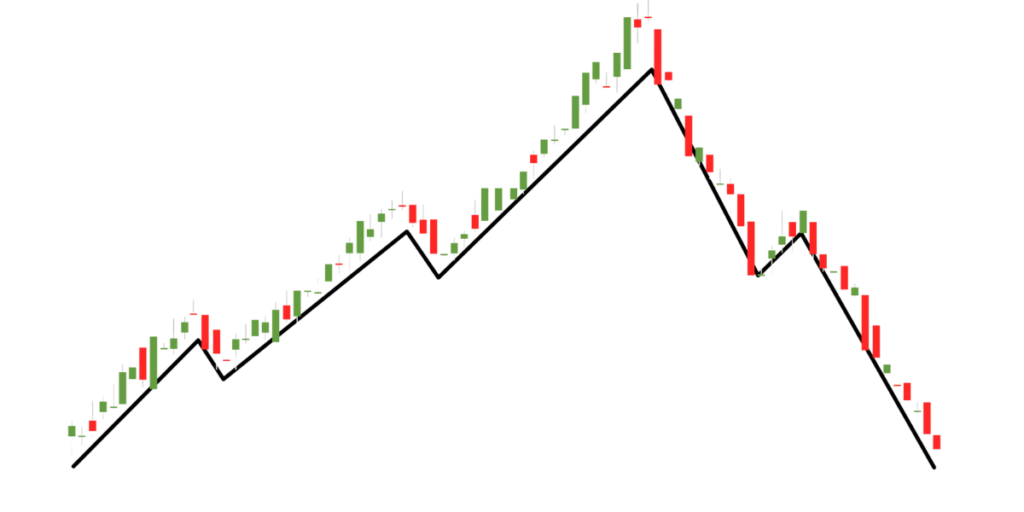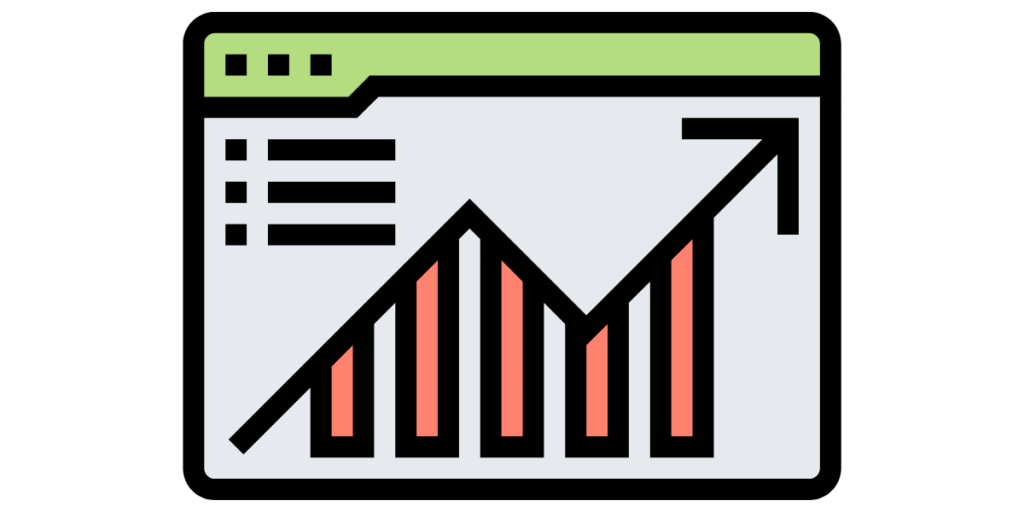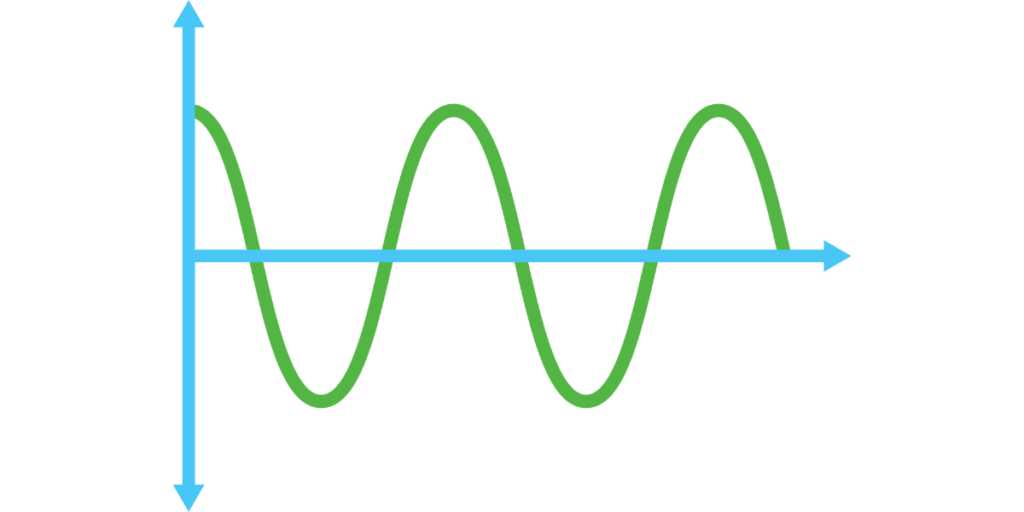Market trends are the observable directions in which markets move over a period of time. They are significant for businesses, investors, and consumers alike as they can influence decision-making processes and strategic planning.
Market trends can be broadly categorized into three types: uptrends, where prices are generally rising; downtrends, where prices are generally falling; and sideways or horizontal trends, where prices are relatively stable. These trends can be short-term or long-term and can apply to a wide range of markets, including stocks, commodities, currencies, real estate, and consumer goods.
Accurately monitoring these trends can provide valuable insights into the current market scenario and potential future developments. For instance, businesses can use trend analysis to identify opportunities for growth or diversification, while investors can use it to make informed decisions about buying or selling assets. Similarly, consumers can use market trends to make better purchasing decisions.
The Importance of Monitoring Market Trends
Monitoring market trends is crucial for several reasons. First, it allows businesses and investors to stay ahead of the curve by identifying emerging trends before they become mainstream. This can provide a competitive advantage and lead to increased profitability.
Second, monitoring market trends can help businesses and investors mitigate risks. For example, if a business notices a downtrend in demand for its products, it can take proactive measures to diversify its product range or target new markets.
Third, monitoring market trends can provide valuable insights into consumer behavior. By understanding what consumers are buying, how they are spending their money, and what factors are influencing their purchasing decisions, businesses can tailor their products, services, and marketing strategies to meet consumer needs and preferences.
Techniques for Tracking Market Trends
There are various techniques used to track market trends, ranging from traditional methods like economic indicators and financial reports to advanced techniques like big data analytics and algorithmic trading. Each of these techniques has its strengths and limitations, and the choice of technique often depends on the specific needs and capabilities of the business or investor.
The following sections will delve deeper into these techniques, providing a comprehensive guide on effectively monitoring market trends. Whether you’re a business owner looking to grow your company, an investor seeking profitable opportunities, or a consumer wanting to make informed purchasing decisions, this guide will equip you with the knowledge and tools you need to navigate the ever-changing market landscape.
Understanding Market Trends
In the world of business and investing, understanding market trends is crucial. These trends, which represent the general direction in which a market is moving, can be categorized into three main types: uptrends, downtrends, and sideways or horizontal trends.
Uptrends
An uptrend is characterized by prices generally rising over time. This is often seen as a positive sign, indicating strong demand and positive sentiment among investors or consumers. In an uptrend, each successive peak and trough is higher than the ones found earlier in the trend.
Downtrends
A downtrend, on the other hand, is characterized by prices generally falling over time. This can be a sign of weak demand or negative sentiment. In a downtrend, each successive peak and trough is lower than the previous ones.
Sideways or Horizontal Trends
Sideways or horizontal trends occur when prices are relatively stable over time. This can indicate a balance between supply and demand and may suggest uncertainty or a period of consolidation before the market moves up or down.
Understanding these trends is crucial for making informed decisions. For instance, a business might choose to launch a new product during an uptrend, while an investor might decide to sell stock during a downtrend.
Basic Concepts in Trend Analysis
In addition to understanding the types of trends, it’s also essential to grasp some basic concepts used in trend analysis. These include support and resistance, trendlines, and moving averages.
Support and Resistance
Support is a price level where a downtrend is expected to pause due to a concentration of demand. Resistance, conversely, is a price level where an uptrend is expected to pause due to a concentration of supply.
Trendlines
Trendlines are lines drawn on a price chart that represent the direction of a trend. They can be used to identify potential areas of support or resistance and to signal potential trend reversals.
Moving Averages
Moving averages are statistical calculations that are used to analyze data points by creating a series of averages of different subsets of the full data set. They can help smooth out price fluctuations and highlight the underlying trend.
Understanding these concepts can provide valuable insights into market behavior and help businesses, investors, and consumers make more informed decisions. So whether you’re looking to grow your business, invest wisely, or make smarter purchasing decisions, understanding market trends is a crucial first step.
Traditional Methods for Monitoring Market Trends
Traditional methods for monitoring market trends often involve the analysis of economic indicators, financial reports, and news/current events. These methods, while not without their limitations, can provide valuable insights into market behavior and future trends.
Economic Indicators
Economic indicators are statistical measurements that reflect the overall health of an economy. As a result, they can provide insights into current and future market trends. Some of the most commonly used economic indicators include:
- Gross Domestic Product (GDP): This measures the total value of all goods and services produced by an economy over a specific period. It’s often used as an indicator of economic health.
- Employment Data: This includes data on unemployment rates, job creation, and wage growth. High employment rates can indicate a healthy economy, which can lead to positive market trends.
- Consumer Price Index (CPI): This measures the average change in prices paid by consumers for a basket of goods and services. It’s often used as a measure of inflation.
These and other economic indicators can provide valuable insights into the overall health of an economy and potential market trends.
Financial Reports
Financial reports, such as annual and quarterly reports of companies, are another traditional method for monitoring market trends. These reports can provide insights into a company’s financial health and future prospects. They typically include information on a company’s revenues, expenses, profits, assets, liabilities, and cash flows.
By analyzing these reports, businesses and investors can gain insights into market trends within a specific industry or sector. For instance, if several companies within an industry are reporting increased revenues and profits, this could indicate a positive trend within that industry.
News and Current Events
News and current events can have a significant impact on market trends. This includes not only financial news but also political events, natural disasters, technological advancements, and other major events.
For instance, news of a political conflict could lead to a downtrend in the stock market, while news of a major technological breakthrough could trigger an uptrend in the tech sector.
Therefore, monitoring news and current events is a crucial part of tracking market trends. It can help businesses and investors stay ahead of the curve and make informed decisions.
While traditional methods for monitoring market trends may not be as advanced or precise as some modern techniques, they remain a fundamental part of any market analysis toolkit. By combining these traditional methods with more advanced techniques, businesses and investors can gain a comprehensive understanding of market trends and make more informed decisions.
Technical Analysis for Market Trend Monitoring
Technical analysis is a method of predicting the future direction of market prices based on the study of past market data, primarily price, and volume. It’s a popular tool used by traders and investors for short-term trading or to complement fundamental analysis. Here are some key concepts in technical analysis:
Price Patterns
Price patterns are formations that appear on a price chart and provide an indication of what the future movement of an asset could be. Some of the most common price patterns include:
- Head and Shoulders: This pattern is typically seen at the peak of an upward trend and can indicate that the asset’s price is set to fall once the pattern is completed.
- Double Tops and Bottoms: These patterns occur when the price of an asset hits the same high or low point twice and can indicate a reversal in trend.
Understanding these patterns can help traders and investors anticipate potential market trends and make informed decisions.


Moving Averages
Moving averages are a type of technical indicator that smooths out price data by creating a constantly updated average price. The most common types are the simple moving average (SMA), the exponential moving average (EMA), and the weighted moving average (WMA).
Moving averages can help identify the direction of the trend and determine potential support and resistance levels.
Indicators and Oscillators
Indicators and oscillators are mathematical calculations based on the price and volume of an asset that can help forecast price trends. Some of the most commonly used indicators and oscillators include:
- MACD (Moving Average Convergence Divergence): This is used to identify potential buy and sell signals.
- RSI (Relative Strength Index): This measures the speed and change of price movements and is often used to identify overbought or oversold conditions.
- Bollinger Bands: These are volatility bands placed above and below a moving average where volatility increases, the bands widen, and they narrow when volatility decreases.

Volume Analysis
Volume analysis involves the examination of the number of shares or contracts of an asset that change hands over a certain period. High volume levels are often associated with market tops and bottoms, while low volume levels can indicate a lack of confidence or interest in a particular asset.
Technical analysis offers a variety of tools for monitoring market trends. By understanding and applying these tools, traders, and investors can gain valuable insights into market behavior and make more informed decisions.
Sentiment Analysis for Predicting Market Trends
Sentiment analysis, also known as opinion mining, involves interpreting and classifying emotions within text data using text analysis techniques. In the context of market trends, sentiment analysis can be used to gauge the overall sentiment or feeling of investors and consumers towards a particular market, asset, or product. This sentiment can often be a powerful indicator of future market trends.
Sentiment Indicators
Sentiment indicators are quantitative measures that reflect the overall sentiment or mood of investors. These indicators can be derived from various sources, including surveys, market data, and social media.
For example, the Bullish Percent Index is a popular sentiment indicator that measures the percentage of stocks that are currently trading with bullish patterns. A high value may suggest a bullish market sentiment, while a low value may suggest a bearish sentiment.
Role of Social Media and Online Forums
In recent years, social media and online forums have become increasingly important sources of sentiment data. Platforms like Twitter, Reddit, and various financial forums are filled with comments, discussions, and debates about different markets and assets.
By analyzing the sentiment expressed in these online discussions, businesses and investors can gain insights into the overall market sentiment and potentially predict future market trends. For instance, a surge in positive sentiment towards a particular stock on social media could indicate an upcoming uptrend for that stock.
However, it’s important to note that sentiment analysis is not a foolproof method for predicting market trends. While it can provide valuable insights, it should be used in conjunction with other methods and tools for a more comprehensive understanding of market trends.
Sentiment analysis offers a unique perspective on market trends by focusing on the emotions and opinions of investors and consumers. By understanding and analyzing market sentiment, businesses, and investors can potentially anticipate and respond to market trends more effectively.
Advanced Techniques and Tools for Monitoring Market Trends
In the modern era, a variety of advanced techniques and tools have emerged that can provide deeper insights into market trends. These techniques often leverage technology and data analysis to offer a more comprehensive view of the market landscape.
Online Tools for Monitoring Market Trends
Online tools like Semrush’s Market Explorer can provide valuable insights into market trends and the competitive landscape. These tools allow users to analyze a wide range of data, including market size, traffic, and traffic cost. They can also provide a visual representation of the market landscape, helping users to identify trends and potential opportunities.
Consumer Segmentation
Consumer segmentation involves dividing a market into distinct groups of consumers who share similar characteristics. This can help businesses target the right people with their marketing efforts and monitor market trends within specific segments. Segmentation can be based on a variety of factors, including demographics, behavior, and psychographics.
Purchase Situation Analysis
Understanding customers’ buying patterns through purchase situation analysis can influence product offerings and monitor market trends. This involves analyzing the circumstances in which a purchase is made, including the time, place, and manner of purchase. This information can help businesses tailor their offerings to meet customer needs and anticipate market trends.
Competitor Analysis
Competitor analysis involves identifying and evaluating your competitors, their strategies, and their strengths and weaknesses. This includes both direct competitors (those who offer the same products or services) and indirect competitors (those who offer alternative solutions). Understanding your competition can help you identify market trends, opportunities for differentiation, and potential threats.
Complementary Product and Service Analysis
Monitoring the performance of products and services that are complementary to your business can help in identifying market trends. In addition, complementary product and service analysis can reveal opportunities for partnerships, bundling deals, or new product development.
Diversification Analysis
Diversification analysis involves evaluating the potential benefits of expanding into different markets, products, or services. This can help businesses understand how and where to grow, especially when they have reached a high level of maturity in their current market. In addition, diversification can help businesses capitalize on new market trends and mitigate risks associated with over-reliance on a single market.
Foreign Market Analysis
Foreign market analysis involves exploring markets in other countries to identify new opportunities and trends. This can help businesses achieve their financial goals, diversify their operations, and mitigate risks associated with domestic market fluctuations.
Environmental Analysis
The environmental analysis involves assessing external factors that can impact market trends. This includes economic situations, geopolitical events, changes in regulations, technological and scientific developments, and environmental factors like climate change. Understanding these external factors can help businesses anticipate market trends and adapt their strategies accordingly.
These advanced techniques and tools offer powerful ways to monitor market trends. By leveraging these resources, businesses, and investors can gain a deeper understanding of the market landscape, make more informed decisions, and ultimately achieve their financial goals.
Challenges and Limitations in Monitoring Market Trends
While monitoring market trends is crucial for making informed business and investment decisions, it’s important to be aware of the potential pitfalls, challenges, and limitations of the methods used for this purpose.
Data Overload
In the age of big data, one of the key challenges is data overload. With so much information available, it can be difficult to sift through the noise and identify meaningful trends. This requires sophisticated data analysis skills and tools, which may not be accessible to all businesses or investors.
Interpretation of Data
Another challenge is the interpretation of data. Different analysts may interpret the same data in different ways, leading to different conclusions about market trends. This is particularly true for complex methods like technical analysis and sentiment analysis, which can be subjective and open to interpretation.
Time Lag
There can also be a time lag between when a trend emerges and when it is identified. By the time a trend is identified, it may have already peaked, and the market may be moving in a different direction. This is particularly true for traditional methods like economic indicators and financial reports, which often rely on historical data.
External Factors
External factors, such as economic events, political changes, and technological advancements, can also impact market trends and make them unpredictable. These factors can be difficult to anticipate and can lead to sudden changes in market trends.
Limitations of Tools and Techniques
Finally, each tool and technique used for monitoring market trends has its own limitations. For instance, sentiment analysis can be influenced by factors like sarcasm or ambiguity in language, while technical analysis assumes that past performance will predict future performance, which is not always the case.
While monitoring market trends is crucial, it’s equally important to be aware of the challenges and limitations involved. By understanding these challenges, businesses and investors can make more informed decisions and develop more effective strategies for monitoring market trends.
Conclusion
Monitoring market trends is a fundamental aspect of strategic planning for businesses, investment decision-making for investors, and purchasing decisions for consumers. Understanding the direction in which a market is moving can provide valuable insights into potential opportunities for growth, investment, and consumption.
We’ve explored a variety of methods for monitoring market trends, from traditional techniques like the analysis of economic indicators and financial reports to more advanced methods like sentiment analysis and the use of online tools like Semrush’s Market Explorer. We’ve also discussed the importance of understanding consumer behavior through consumer segmentation and purchase situation analysis and the value of competitor analysis and complementary product and service analysis.
However, it’s important to remember that each of these methods has its own strengths and limitations. In addition, no single method can provide a complete picture of market trends. Therefore, a combination of these methods is typically the most effective approach. This can help to offset the limitations of individual methods and provide a more comprehensive view of market trends.
Moreover, it’s crucial to be aware of the potential challenges and pitfalls in monitoring market trends, such as data overload, interpretation of data, time lag, external factors, and the limitations of tools and techniques.
Understanding and monitoring market trends is a complex but essential task. By leveraging a combination of traditional and advanced methods and by being aware of potential challenges, businesses, investors, and consumers can navigate the ever-changing market landscape more effectively and make more informed decisions.

